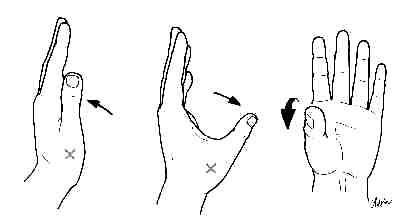
|
|---|
1. The thumb's MP and CMC joints abduct and adduct in a plane perpendicular to the palm. Some therapists also refer to abduction as "palmar abduction."
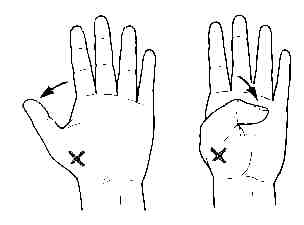
|
|---|
2. The thumb's MP and CMC joints flex and extend in a plane parallel to the palm. Some therapists refer to extension as "radial abduction," because the thumb moves toward the hand's radial side.
|
|---|
|
|---|
Why do we name CMC movements in this manner?
The CMC joint is biaxial, not triaxial. However, its loose capsule permits rotation, and the metacarpal rotates automatically when it moves in the other two planes. Specifically:
- combined CMC flexion and abduction produces CMC opposition
- combined CMC extension and adduction produces CMC reposition.
Close-packed positions
You cannot passively rotate the CMC when you place it in full opposition or full reposition; these are the CMC joint's close packed positions. In these positions, the capsular fibers are maximally elongated and taut, and so prevent CMC rotation.
Arthrokinematics
The first metacarpal articulates with the trapezium.
The diagram (Norkin & Levangier, 1992, p. 287) depicts the plane for CMC abduction/adduction. Compare it with the figure in your text (Hertling & Kessler, 1996, Fig. 11-7).
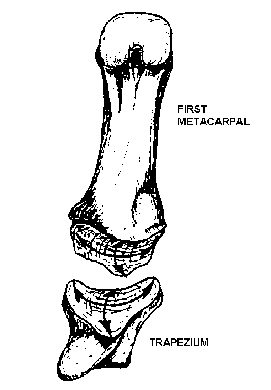
|
The saddle-shaped trapezium is:
- concave in the plane of CMC abduction/adduction
During CMC abduction or adduction (in a direction perpendicular to the palm), the metacarpal rolls and glides in opposite directions.
- convex in the plane of CMC flexion/extension
During CMC flexion or extension (in a direction parallel to the palm), the metacarpal rolls and glides in the same direction.
|
|---|
Naming of movements at the first CMC joint
We name thumb movements just as we do movements in the other finger joints.
- Abduction and adduction occur around an antero-posterior axis.
- Flexion and extension occur around a lateral axis.
However, because the thumb attaches to the hand at a different angle than do the other digits, the thumb's AP and lateral axes are oriented differently than in the other digits.
The thumb or first ray, which comprises the metacarpal, proximal phalanx, and distal phalanx, attaches to the trapezium and the rest of the hand at the first carpo-metacarpal (CMC) joint. This attachment is at nearly a right angle to those of the second, third, fourth, and fifth digits.
To appreciate this, examine the orientation of the fingernails on your relaxed hand as you point your fingertips toward yourself. The thumbnail is oriented at a right angle to the nails of the other fingers.
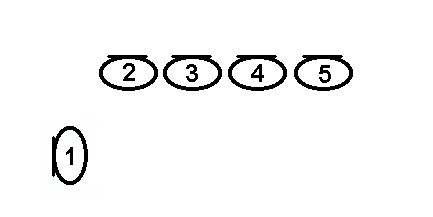
| The familiar lateral axes, around which the fingers flex and extend, are turned 90 degrees at the thumb's CMC and MP joints. These joints flex and extend in a plane that is parallel to the palm.
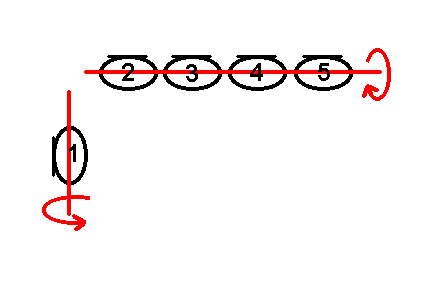
| The familiar AP axes, around which the MP joints abduct and adduct, are also turned 90 degrees at the thumb's CMC and MP joints. These joints abduct and adduct in a plane that is perpendicular to the palm.
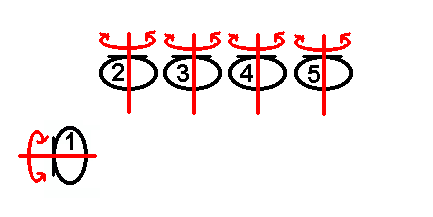
| |
|---|
|
|---|
|
|---|
You can always orient yourself to the thumb's joint axes by considering the plane in which the thumbnail rests to be the thumb's frontal plane. Abduction and adduction of the first CMC and MP joints occur in this plane. Flexion and extension of the first CMC, MP, and IP joints occur in a plane that is perpendicular to the thumbnail. Orienting yourself to the thumb's unique planes of movement in this way lets you name the thumb's movement regardless of its position, and regardless of how the first ray might be rotated during opposition or reposition.
References:
Hertling, D., & Kessler, R. M. (1996). Management of common musculoskeletal disorders: Physical therapy principles and methods. (3rd ed.). Philadelphia: J.B. Lippincott.
Norkin, C.C., & Levangie, P.K. (1992). Joint structure and function (2nd ed.). Philadelphia: F.A. Davis.
Last updated 3-2-01 ©Dave Thompson PT
return to Control of Human Movement 1 and 2 lecture schedule






